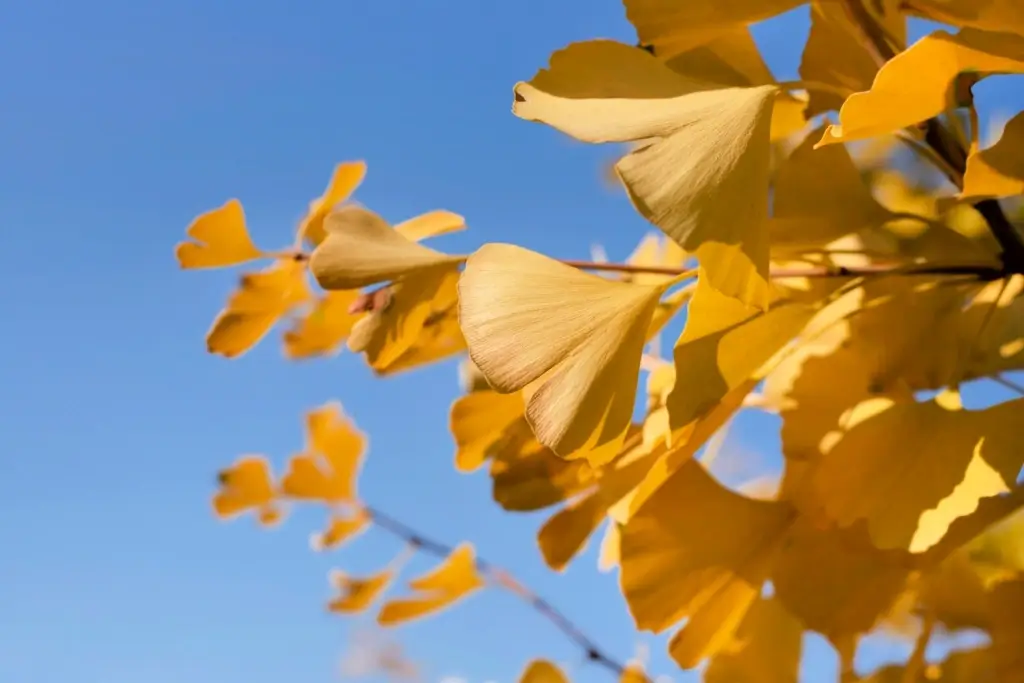Fall is one of the most enchanting times to visit Japan, providing a welcome relief from the summer heat. The landscapes bloom as the leaves transform into rich red, orange, and gold shades. Among Japan’s most iconic trees is the ginkgo tree, famed for its brilliant yellow-gold leaves that form radiant canopies, lining streets and parks in breathtaking golden splendor. We’ll introduce what Gingko trees are, their unique features, and where the best locations to find them!
Table of Contents
ToggleWhat is the ginkgo tree?
Ginkgo, or ginkgo biloba, are large trees originally from China. People often refer to them as living fossils because they have existed since the time of dinosaurs. In Japan, visitors commonly see ginkgo trees within temple and shrine grounds, and consider them sacred. Some shrines and temples also boast ginkgo trees that are around 1,000 years old!
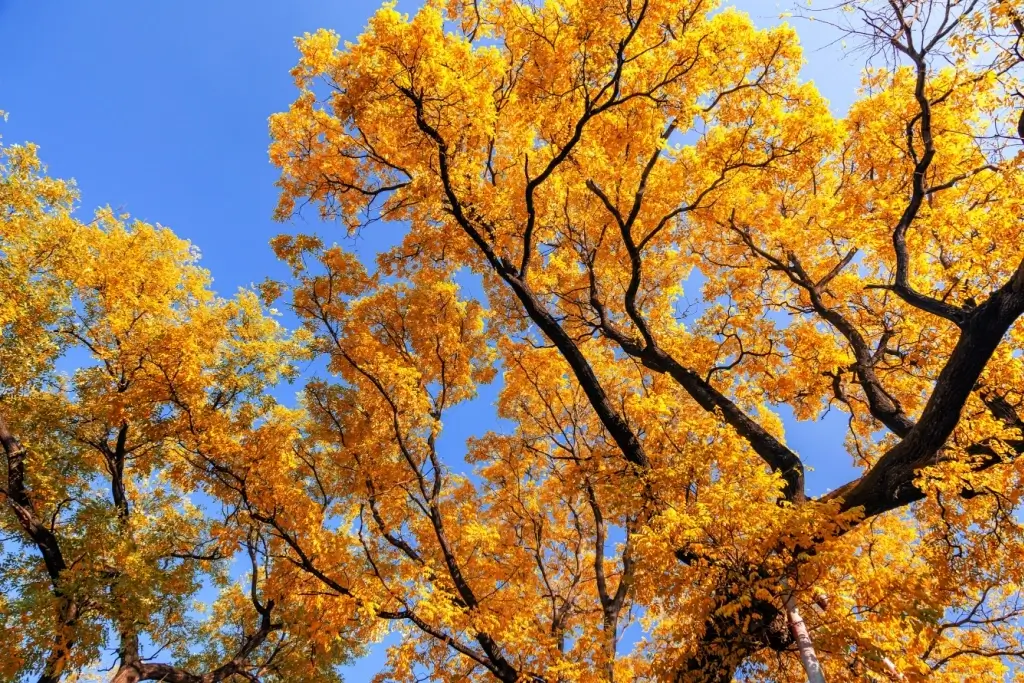
Where does it grow in the world?
While they originate from China, ginkgo trees are found in several other countries, particularly East Asia. In China, they are usually in the southern regions. Outside China and Japan, ginkgo trees are also found in Korea; some are considered 1500 years old. Since Japan and Korea have some of the oldest ginkgo trees, some scholars believe the tree didn’t originate in China.
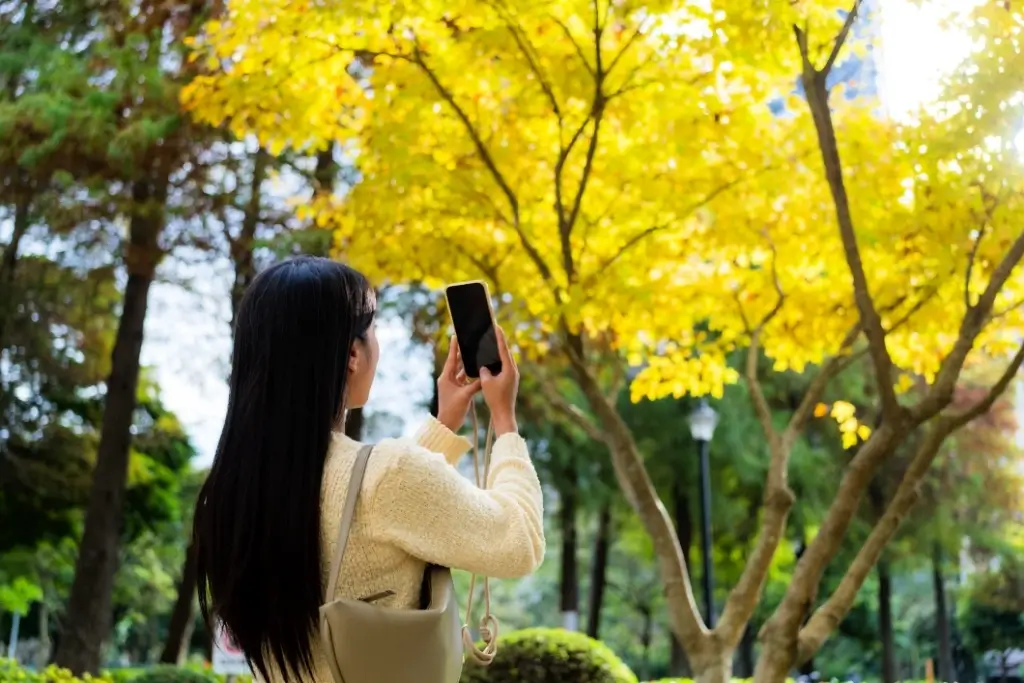
The ginkgo tree is also found in Europe and North America. These trees are mostly found in famous urban areas because they tolerate pollution and rarely succumb to disease. The two oldest trees growing outside Asia are in the Netherlands and Belgium. The giant ginkgo tree in America is at Vanderbilt Mansion in New York.
What are some unique traits of the ginkgo tree?
The ginkgo tree has various unique traits, most notably its golden leaves. But did you know that certain tree parts have been consumed for centuries due to their various health benefits? That’s right. This tree has a long history of use in traditional East Asian medicine, where the extract and nuts are common remedies for various medical issues.
Golden Leaves
The ginkgo tree’s fan-shaped leaves are one of its most distinctive and recognizable features. These large leaves transform from vibrant yellow to golden brown in the fall, creating a breathtaking autumn display. Not to mention, their size and unique shape make them popular in photos, with many using the broad leaves to cover their faces playfully.

Ginkgo biloba extract
Ginkgo biloba extract, derived from the ginkgo tree leaves, is famous for its potential health benefits. It also has antioxidant properties and may improve cognitive function, enhance memory, and boost circulation. People usually ingest it in supplements, in both traditional and modern medicine, particularly for supporting brain health and reducing inflammation.
Ginkgo nuts
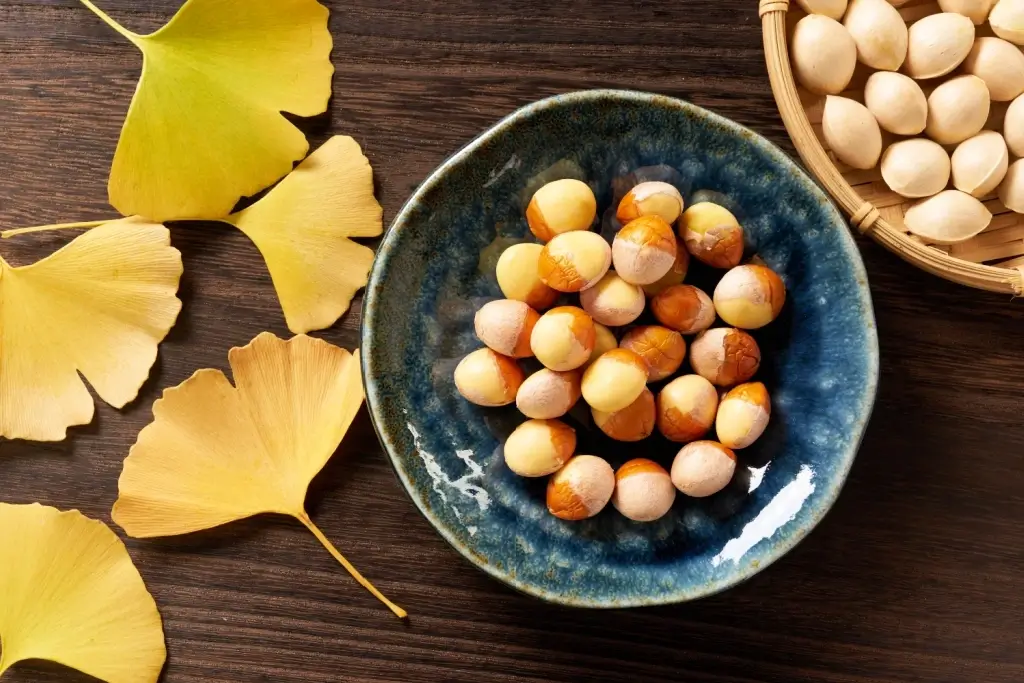
Ginkgo nuts, taken from the seeds of the ginkgo tree, have been used in East Asian cuisine for centuries. These small, oval-shaped nuts are famous for their mild, slightly sweet flavor, making them highly useful in cooking. Because they may also support digestion and cognitive function, they are common ingredients in soups, stir-fries, and desserts.
Are you looking for amazing snacks this fall? Check out Sakuraco! Sakuraco delivers traditional Japanese snacks, sweets, tableware, and more from local Japanese makers right to your door, perfect for a pleasant snack time at home!
Where are some popular places in Japan to see these trees?
Ginkgo trees are everywhere in Japan; however, there are some definite must-see locations if you plan to visit this fall!
Showa Memorial Park- Tokyo
The Showa Memorial Park, or Showa Kinen Koen in Japanese, is located in the western suburbs of Tokyo. It is one of the largest parks in Tokyo and is famous for its various seasonal flowers and trees. During the fall, a “Yellow Autumn Leaves Festival” takes place in the park, where people can enjoy the ginkgo trees that form a tunnel from the Tachikawa entrance.
The trees are planted across 300 meters (984 feet), making it a breathtaking sight! This year, the best time to view the trees is anticipated to be from late October or Early November until late November.
Nara Park
Nara is famous for its free-roaming deer and its stunning collection of ginkgo trees that grace Nara Park. These vibrant trees create a beautiful backdrop for various temples, shrines, and cultural sites. Weekdays are less crowded, making it the ideal time to capture the perfect autumn Instagram shot with the ginkgo trees framing the scene. The best time to view the trees in Nara this year is mid-November!
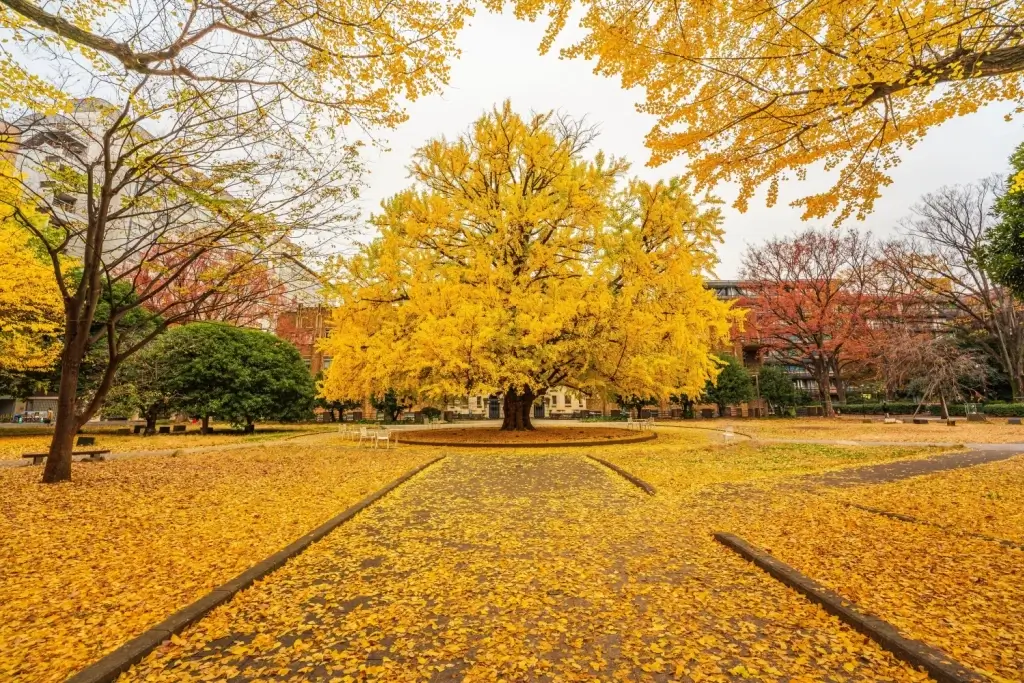
Hokkaido University
While Hokkaido is famous for its winter snow, it also features remarkable locations where you can enjoy the vibrant colors of autumn leaves. One of the most beloved spots to see ginkgo trees is Hokkaido University, conveniently located near Sapporo Station. Along a 380-meter path, around 70 ginkgo trees create a stunning golden tunnel for students and visitors alike. Additionally, fall starts earlier than most places in Japan, so the best time to view it is mid-to-late October until November.
Why is the ginkgo tree important in Japan?
The ginkgo tree holds significant cultural importance in Japan for various reasons, mainly because it is traditionally considered sacred. Some temples and shrines also have very old ginkgo trees, highlighting their deep connection to Japan’s cultural heritage. Their stunning golden leaves create breathtaking autumn landscapes, symbolizing the season’s beauty, which are often featured in modern and historic artworks.
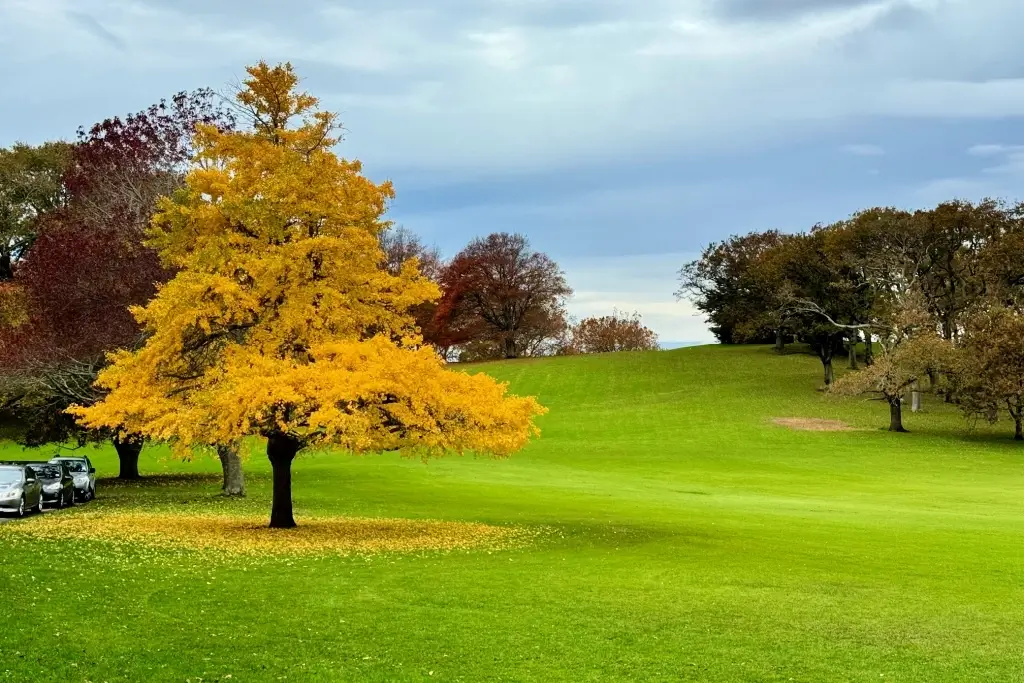
Additionally, people have been consuming ginkgo nuts and extracts in traditional medicine for centuries, demonstrating the tree’s essential role in Japan’s cultural practices and heritage. Do you have ginkgo trees in your home country? Let us know in the comments below!


